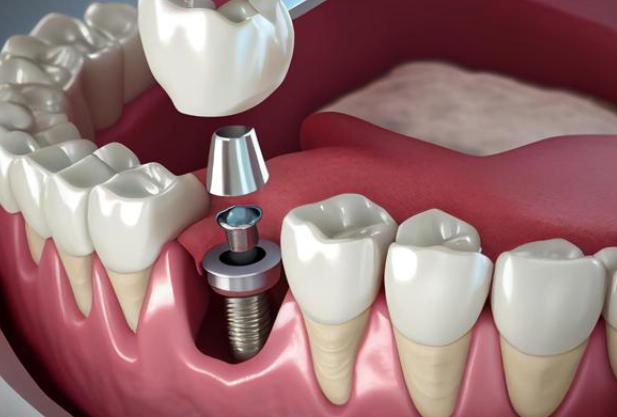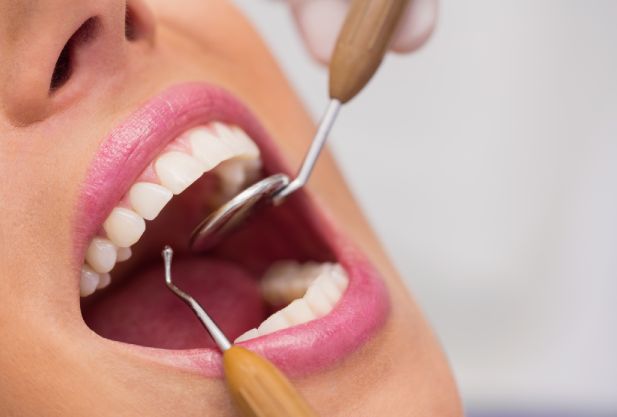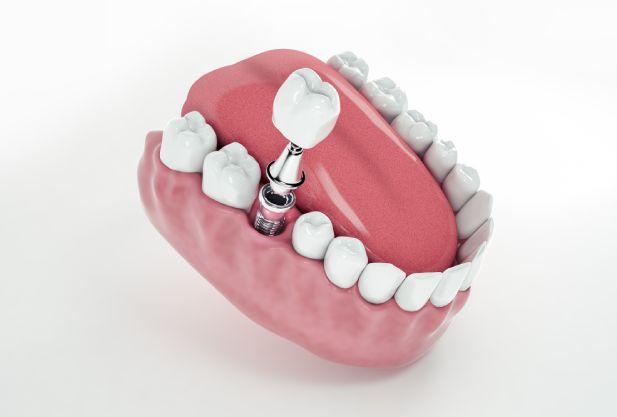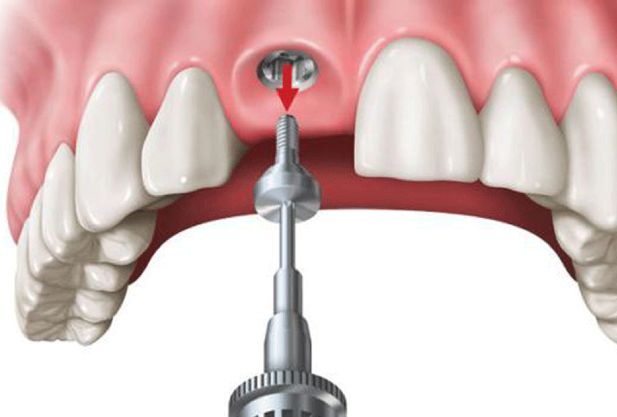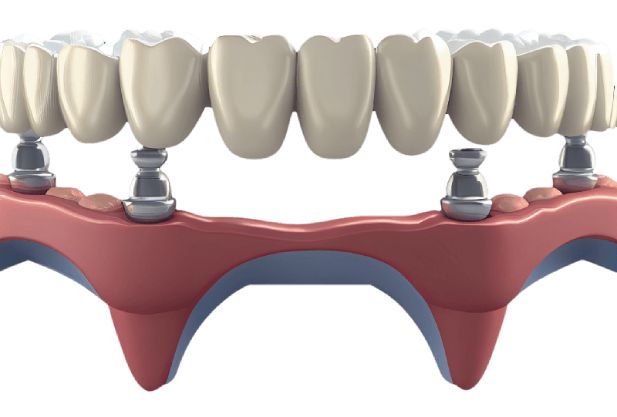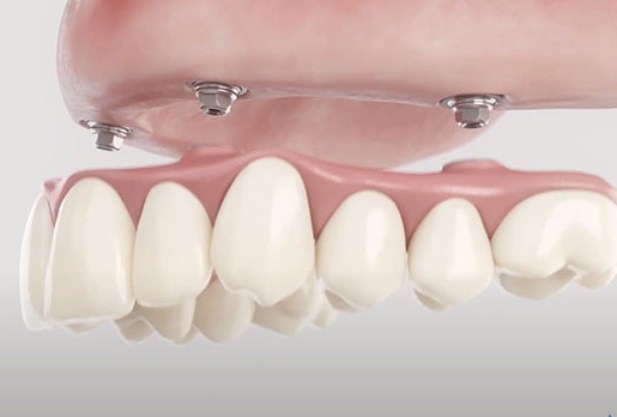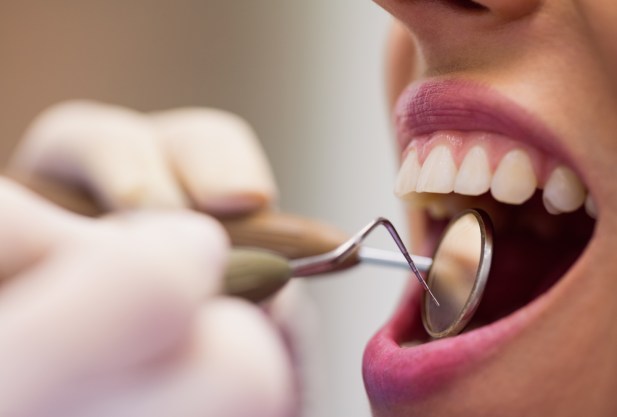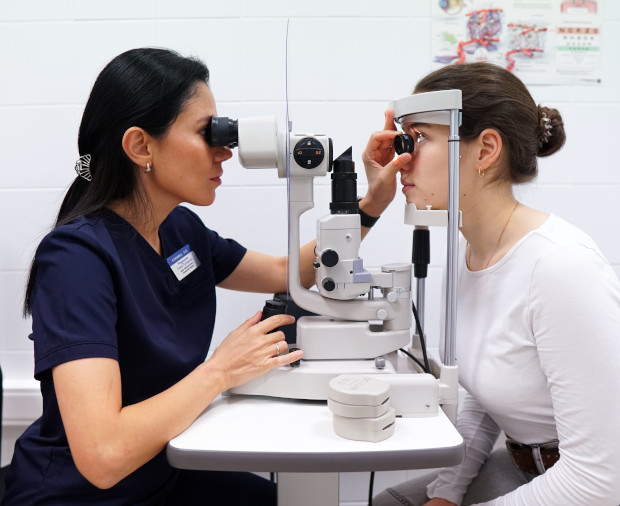Classic two-stage dental implantation

specialists

equipment

treatment

In dentistry, two-stage implantation is a classic method of restoring decayed teeth, consisting of two stages. It is used both for multiple defects in the dentition, and in the absence of one or more units. At the same time, an orthopedic implant is installed in place of the extracted tooth, which will act as a root, and a crown is placed on top of it. In the event of the destruction of several teeth located nearby, a bridge prosthesis is fixed to the metal rods. With complete adentia, you can restore the whole jaw.
The two-stage method of implantation requires more time and is more expensive than the one-stage method. However, it is possible to pay for each stage separately, which is convenient for most patients.
The price of a two-stage implantation depends on such factors:
- Choose brand of implant system
- Material of the implant, crown and accessories - a set of the same category is selected
- Number of implants
Also, the total cost of prosthetics will include treatment, diagnostics, bone grafting (if necessary).
In the medical center "K+31" you can undergo a comprehensive diagnosis, pass all the necessary tests in our laboratory, make an orthopantomogram. Our specialists select the type and material of the prosthesis, taking into account the availability the patient has contraindications, allergies, individual diseases.
To sign up for a consultation with an implantologist, learn more about the services of our clinic, the price of the procedure, admission schedule, promotional offers, fill out the online feedback form.
Features of the classical method of dental prosthetics
Two-stage dental implantation is the standard and classic way to restore the dentition. This effective technique has been tested for decades. Later, a newer technique appeared - one-stage implantation with an instant load, which reduces the time of prosthetics, but is not indicated in all cases.
Classical implantation involves the installation of an implant, which is loaded with an orthopedic prosthesis after 3-6 months. To restore one tooth, a single implant is used, and for the entire jaw, a one-piece prosthesis is used, which is mounted on several support rods.
Dental implantation in two stages has the following advantages:
The titanium implant first takes root and firmly fuses with the jaw bone, and after that a crown is placed on it and chewing load is allowed. This approach improves the quality of its integration. and reduces the risk of rejection or damage in 99% of cases
If necessary, bone tissue is built up immediately before implantation, the wound will have time to heal
After implantation of the implant until the next stage, the gum is sutured. This reduces the risk of wound infection, damage during chewing, or foreign body rejection.
Staged payment for prosthetics - comfort for a patient who cannot immediately fully pay for implant treatment
Classical implantation of teeth in two stages takes more time than one-stage. But at the same time, the end result is of higher quality, and the duration of the life of the structure is also higher.
Conditions for the operation
The doctor recommends a two-stage method only after a comprehensive examination, assessing the condition of the patient's jaw, analyzing the presence of chronic diseases and contraindications.
Implantation begins only after preliminary sanitation of the oral cavity - elimination of caries, pulpitis or periodontitis as sources of infection. In case of significant defects and destruction, the remains of the teeth are first removed. If prosthetics of the entire jaw is performed, the doctor removes all the roots.
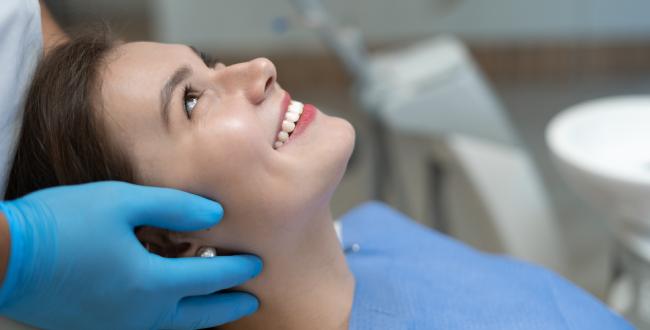
Classical implantation without simultaneous loading is indicated for:
- Complete edentia, including bone tissue atrophy
- Destruction of chewing molars, which it is better not to put a load on after implantation, but to allow them to fuse with the bone
- There is no way to stabilize the implant, there is a risk of rejection of the structure
Most often, the classical method is chosen for the lower jaw when restoring chewing teeth.

There are restrictions on the operation. Implantation is not performed for the following conditions and diseases:
- Decompensated diabetes
- Bleeding disorders
- HIV or AIDS, hepatitis
- Autoimmune diseases
- Pregnancy and lactation
Bone tissue atrophy is not a direct contraindication to implantation, since augmentation can be carried out before this. Also, during the treatment period, the patient should not have infectious diseases, fever or other diseases, the presence of which does not require surgical intervention.
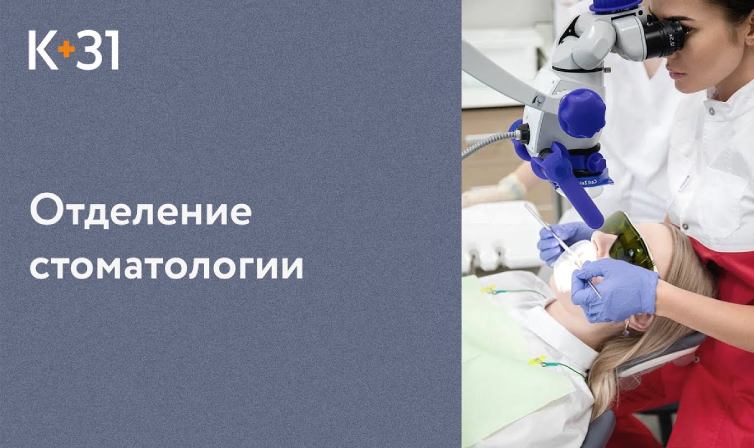
Modern methods of diagnostics and dental treatment at "K+31"
Our doctors
Make an appointment at a convenient time on the nearest date
Price

This award is given to clinics with the highest ratings according to user ratings, a large number of requests from this site, and in the absence of critical violations.

This award is given to clinics with the highest ratings according to user ratings. It means that the place is known, loved, and definitely worth visiting.

The ProDoctors portal collected 500 thousand reviews, compiled a rating of doctors based on them and awarded the best. We are proud that our doctors are among those awarded.

